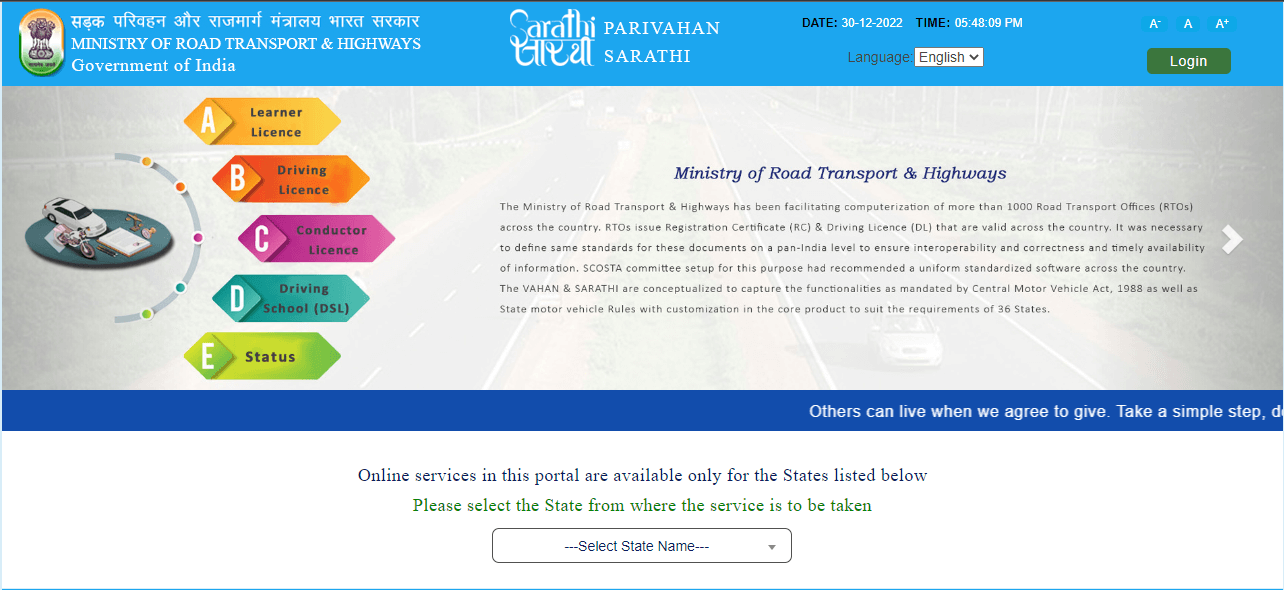Now an individual can issue their caste certificate online from a high authority within a short time period. Keep reading to know all the details about caste certificate issuing authority.
The caste certificate in India has huge importance for those who belong to reserved categories including Schedule caste (SC), Schedule Tribe (ST), and Other Backward class (OBC). This document is used to prove the caste evidence whenever it is required. It is generally used to avail schemes and offers from the state or central government of India. Caste category certificate allow the candidates to avail benefits in school or college admissions, competitive examinations and their cutt-offs, employment government subsidies, and scholarships. Read more to know about caste certificate issuing authority.
Meaning of Caste Certificate
The meaning of caste certificates is having documented proof of belonging to a particular caste. It is an essential document that helps to avail various government schemes.
This document proves the original caste of the individual of the reserved category, whenever it is required. This was started by the Indian Government as the part of “Indian System of Protective discrimination” for the encouragement of the backword category by providing some special privileges.
The Indian government felt the need to encourage scheduled caste and tribes and other backward classes to walk along with the rest of the citizens. Thus, they reserve some seats for these castes in the legislature and the government services. They also provide relaxation in some or whole part of fees for school or college admissions, quotas in educational institutes, relaxation in age limit to apply in different jobs, etc.
To avail of these benefits, the candidate should have a valid caste certificate.
What Factors Are Considered While Issuing the Caste Certificate?
Before issuing the caste certificate, the applicants need to consider the following things:-
1.Identity proof
- PAN Card
- Aadhaar Card
- Passport
- MGNREGA Card
- RSBY card
- Driving License
- Identity card issued by government or semi-government organizations
2. Address proof
- PAN card
- Aadhaar card
- Voter ID card
- Ration Card
- Driving license
- Electricity bill
- Water bill
- Property tax receipt
- Telephone bill
- Rent receipt
- Passport
3. Affidavit for Caste certificate
4. Caste proof
- The extract of primary school register of applicant’s, applicant’s father or grandfather
- Applicant’s, father’s, and grandfather’s primary school leaving certificate
- Extract of birth register of the applicant, applicant’s father or grandfather.
- Extracts from government service record (book) that includes caste, community, category of the applicant or applicant’s father or grandfather.
- Records of revenue and village panchayat
- Caste certificate issued by the Department of Social justice
- Other relevant records
How to Know Caste Certificate Issuing Authority?
The caste certificate is issued by the state government of the respective individual. Every state government or UT administration has provided a proper procedure to issue the certificates. Every state government and Union territory has its own procedure for this process. In India the certificates are bilingual, one is the state language and the other is English. The caste certificates are issued by the following authorities in the given format by the central government.
- District Magistrate, Additional District Magistrate, Collector, Deputy Commissioner, Additional Deputy Commissioner, Deputy Collector, 1st Class Stipendiary Magistrate, Sub Divisional Magistrate, Taluka Magistrate, Executive Magistrate, Extra Assistant Commissioner.
- The Chief Presidency Magistrate, Additional Chief Presidency Magistrate, Presidency Magistrate.
- Revenue Officer. He or she shouldn’t be below the rank of Tehsildar.
- The sub-divisional officer of the place where the candidate and his or her family is living.
State Vise Following Authorities the Caste Category Certificate
Andhra Pradesh – Revenue Department, Government of Andhra Pradesh
Arunachal Pradesh – Deputy Commissioner’s Office of each district
Assam – Office of Deputy Commissioner or SDO of each district
Bihar – Circle office/SDO office/District Magistrate office
Chattisgarh – SDM/Tehsildar/Revenue Department Offices
Goa – Revenue Department, Government of Goa
Gujarat – Tehsil/Revenue Office
Haryana – SDM of the concerned Subdivision or District Commissioner of the concerned district
Himachal Pradesh – Tehsildar/Naib Tehsildar of the concerned district
Jharkhand – Department of Personnel, Administrative Reforms and Rajbhasha
Karnataka – Taluk level functionary
Kerala – Revenue Inspector or Village Administrative Officer
Madhya Pradesh – Tehsil/Revenue/Circle Office
Maharashtra – Sub-Divisional Officer/ Deputy Collector
Manipur – Office of Deputy Commissioner
Meghalaya – Sub-Divisional Officer/ Deputy Collector
Mizoram – Tehsil/Revenue/Circle Office
Nagaland – Office of the Commissioner Nagaland / District Administration / District Magistrate
Odisha – District Magistrate/ADM/SDO/Tahsildar
Punjab – Concerned Sub-Divisional Office
Rajasthan – Respective Tehsil/Block/Revenue Office
Sikkim – District Administrative Center
Tamil Nadu – Taluk/Panchayat Union Office
Telangana – Tehsil/Revenue Office
Tripura – Office of the Sub-Divisional Magistrate
Uttar Pradesh – District Magistrate Office of concerned district
Uttarakhand – Respective Tehsil /Revenue/Circle Office
West Bengal – District Welfare Office/SDO/BDO
Andaman and Nicobar Island – Concerned Tehsildar Officer
Chandigarh – SDM Office
Dadra and Nagar Haveli – Mamlatdar office/Collector office
Daman and Diu – Mamlatdar office/Collector office
Delhi – SDM/Tehsildar/CSC (Citizen Service Center)
Jammu and Kashmir – Concerned Tehsildar Offices
Ladakh – Concerned Tehsildar Offices
Lakshadweep – Tehsil /Revenue/Circle Office
Puducherry – Tehsil /Revenue/Circle Office
Time Period Is Taken by the Authorities to Issue Caste Category Certificate
Aandra Pradesh – 15 days and 30 days for ST category
Arunachal Pradesh – 14 days
Assam – 30 days
Bihar – 10 working days
Chattisgarh – Not specified
Goa – 10 days
Gujarat – Not specified
Haryana – 7 working days
Himachal Pradesh – Not specified
Jharkhand – Not specified
Karnataka – 21 days
Kerala – 5 days
Madhya Pradesh – 30 days
Maharashtra – 45 days
Manipur – Not specified
Meghalaya – Not specified
Mizoram – 2 to 3 days
Nagaland – Not specified
Odisha – Not specified
Punjab – Up to 6 days
Rajasthan – Not specified
Sikkim – Not specified
Tamil Nadu – Not specified
Telangana – 15 days and 30 days for ST category
Tripura – 15 to 40 days
Uttar Pradesh – 15 to 25 days
Uttarakhand – Not specified
West Bengal – Not specified
Andaman and Nicobar Island – Nearly 14 days
Chandigarh – 9 to 30 working days
Dadra and Nagar Haveli – 7 to 10 days
Daman and Diu – 7 to 10 days
Delhi – 14 days
Jammu and Kashmir – Not specified
Ladakh – Not specified
Lakshadweep – Not specified
Puducherry – Not specified
Conclusion
In Articles 341 and 342 of the Indian Constitution, the scheduled caste and scheduled tribes were introduced to the Indian constitution order and the constitution order for scheduled tribes in 1950. Since that time caste certificates have become an important part of the scheduled caste. Also, with Vakilsearch, you can easily apply for a caste certificate.
FAQs
What is the processing time for an online caste certificate application?
The processing time for an online caste certificate application may vary by state, but it generally takes a few weeks to receive the certificate.
Can I check the status of my online caste certificate application?
Yes, you can check the status of your online caste certificate application on the official website of the respective state's Backward Classes Welfare Department or similar authority.
Are there any fees associated with applying for a caste certificate online?
The application fee for a caste certificate varies by state and can range anywhere between ₹10 to ₹500, depending on the decision of the state's authoritative body.
How can I update or correct information on my online caste certificate application?
To update or correct information on your online caste certificate application, you may need to visit the office of the issuing authority and follow the process for amendments.
Is there an age limit for applying for a caste certificate online?
There is no specific age limit for applying for a caste certificate online. However, the certificate is usually issued for educational and employment purposes.
Can I apply for a caste certificate online for my child?
Yes, you can apply for a caste certificate online for your child. To obtain the certificate you will need to provide necessary documents, such as the child's birth certificate and proof of caste.
Are there any specific guidelines or eligibility criteria for obtaining a caste certificate online?
The specific guidelines and eligibility criteria for obtaining a caste certificate online may vary by state. Generally, the applicant needs to belong to a caste that is recognized as a scheduled caste, scheduled tribe or other backward class, as per the government's list. The applicant may also need to provide documents such as birth certificates, school records, and affidavits from family members as proof.
Read More,










